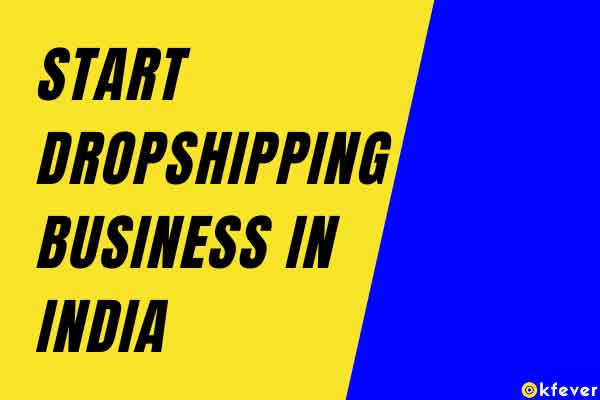Dropshipping is an easy and cost-effective way to start an online business. In India, the eCommerce industry growing day by day, and 75 percent of Indian internet users purchased products through online shopping.
Here’s how you can start Dropshipping Business In India:
On this page
- Step 1. Find a Problem Solving Product
- Step 2. Dropshipping Suppliers
- Step 3. Make a Dropshipping Store or Website
- Step 4. Advertising and Marketing
- Step 5. Payment Gateway
- Step 6. Logistics Partner
- Step 7. Bank Account
- Step 8. Register Your Dropshipping Business
- How much money do I need to start dropshipping in India?
- FAQs
Step 1. Find a Problem Solving Product
Product is the main thing of our Dropshipping Business, as a Dropshipper our main goal is to solve a problem through our product
Find 4 to 5 problem-solving high-quality products and keep in mind that, each of your products will solve a particular problem of a certain group of people.
If your product can’t solve a customer’s problem or the quality of those products is not good then your RTO (Return to Origin) will increase
after finding problem-solving products, test those products through Facebook ads to find a winning product
You can watch this winning product research video for your dropshipping business
Also read – Is RCMC Mandatory for export?
Step 2. Dropshipping Suppliers
After finding some problem-solving products now your job is to find dropship-friendly suppliers, who sell those products
In India, Dropshipping Business is a new business model and still, many manufacturers and suppliers don’t understand it
The best and hassle-free way to find suppliers online is “Indiamart” because most of the big manufacturers and suppliers are registered in “Indiamart” and they understand online business
Your Job is to contact those who are selling your product at “Indiamart” and negotiate with them for the product price
In India, most of the dropshipping-related products are imported from China so you will not find the manufacture of every product in India
Before selecting a Dropshipping Suppliers keep these things in mind
- Professional dropshipping suppliers charge many ways, they can charge one-time fees for registration of their dropshipping service and also charge processing and packing fees for each order
- When a product is not delivered successfully to the customer or the customer returned the product then the supplier charge 2% to 5% as return processing fees or flat rs.20 to rs.30 for packaging, for each order
- If the product is damaged during shipping, the supplier will not bear the loss, you will have to pay for the damage including the product and packaging
- You need to contact those types of suppliers who manufacture the product and avoid those suppliers who depend on the manufacturer
- If you can’t find a manufacturer in India for a specific product, you have to contact the importer-exporter
- Before starting dropshipping, ask your supplier how long it will take to deliver a product to the customer, delivery time should take minimum 5 days and maximum 7 days all over India.
Also read – VivaLyf Innovations net worth After Shark Tank, Owner, Sales
My Experience – I use my own logistics partner Shiprocket for product delivery and now I can better control my shipping time, RTO (Return to Origin), and NDR* (Non-Delivery Report). If you use your own logistics then you can have more control over your business and shipping time
Before Start Dropshipping Verify Manufacturer, Supplier, and Importer-Exporter
- Verify the company’s legal documents
- Verify GST number
- Verify Current Bank Account
- Company Name should be same in each document
- If you want to start dropshipping with importer-exporter, Verify their import-export code (IEC code)
- Verify GST bill
Most Important – If your Manufacturer, Supplier, and Importer-Exporter have registered an account on Indiamart (most probably they have) then do a phone call to IndiaMART customer care and verify supplier information
Verify any GST number through this Govt. official website – GST
If you are dropshipping with a sole proprietorship business then check its GST number, current bank account, and GST bill, make sure that the business name is the same in each document
Also read – What is FCO in Export Import Business?
Step 3. Make a Dropshipping Store or Website
Now it’s time to make a high-converting dropshipping store, watch the video, and make a website
Step 4. Advertising and Marketing
After completing product research, supplier selection, and websites, the most important thing is to sell the product,
We Dropshippers use Facebook ads for testing and selling products, because
The best marketing platform for dropshipping businesses is Facebook ads, it’s easy and cost-effective. You can also use Google ads, Instagram ads
Why do we Dropshippers use Facebook Ads as a primary ad platform, because Facebook ads are cost-effective and you can start Facebook ads on a low budget like INR 400 – 500 rupees per day
And we Dropshippers have to decide as soon as possible whether the product is in demand in the market and whether it will be profitable, according to Facebook ad data
You can test a product and find a winning profitable product within 24 hours through Facebook ads
Step 5. Payment Gateway
In India, the primary payment method is COD (Cash on Delivery) in Ecommerce or Dropshipping business
however many people prefer online payment, that’s why you can offer both COD and online payment methods for your dropshipping business
For accepting online payment, you can use Razorpay as a payment gateway, it’s user-friendly and easily integrates with your Shopify and Woocommerce store
Also read – Nuutjob net worth After Shar Tank, Revenue, Owner, Sales
Step 6. Logistics Partner
Logistics partner plays a big role in your Dropshipping Business, it can make or break your business
If your delivery partner does not deliver the product properly to your customer within the promised time then RTO will increase
And if you use your own logistics partner then you can manage and control your RTO and NDR properly
if you can not control your RTO and NDR, Your Dropshipping business will not make any profit and it will shutdown
You can use Shiprocket for delivering products safely and fast at an affordable price
Step 7. Bank Account
You can start your Dropshipping business with your personal savings bank account, When your business starts to grow you can switch to the current bank account.
Step 8. Register Your Dropshipping Business
You can start as a sole proprietor when you first start, all you need to do is register for GST.
and GST is mandatory if you accept online payment and sell a product outside of your state
When your business starts to grow, you can register your business as a private limited company
How much money do I need to start dropshipping in India?
The cost of Starting a Dropshipping business in India depends on your business model, the estimated money you need to start Dropshipping in India is around Rs.13,000
Here’s the full list of how much money you need to start dropshipping in India
- Requirements for products and suppliers rs. 3-5 thousand
- Packaging- N/A
- Gst registration – rs.1,500 to 2,000
- Printer – N/A
- Shopify platform cost – 29 dollars in Indian rupees 2,156
- Domain name – rs.100 to 1,500
- Per Product Delivery cost – rs.30 to rs.120 (if you use your own logistics)
- Per day Facebook ads cost – rs.400 to rs. 500
- Bank account – You can use savings bank a/c
- Storeroom / Warehouse – rs.1,000 – 5,000 (it depends on location)
FAQs
Is dropshipping profitable in India
Yes, it is profitable and easy to a business model.
Is dropshipping legal in India?
Yes, it is legal and many people start their eCommerce business as Dropshipper.
Where can I get dropshipping products in India?
You can find dropshipping products at Indiamart, also you can find some trending products at Meesho.
Can I use AliExpress for dropshipping in India?
No, AliExpress is not effective for Indian dropshipping, instead, you can use Meesho.
Can I do dropshipping in the USA from India?
Yes, you can do dropshipping from India to the USA, nowadays many people do this for living.
How to Start Dropshipping Business in India? Concise list
here’s a concise list to start a dropshipping business in India:
Choose a profitable niche.
Research and find reliable suppliers.
Create a business plan.
Register your business legally.
Obtain necessary permits and licenses.
Build your online store using an ecommerce platform.
Source products from suppliers and list them on your store.
Develop a marketing strategy to drive traffic.
Manage orders and provide excellent customer service.
Monitor performance and optimize for growth.



